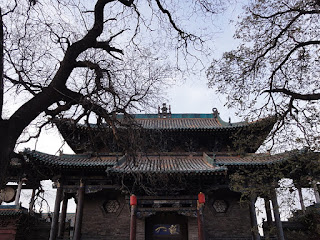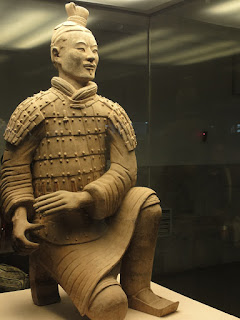Finally feeling the true exhaustion earned by moving cities every 2-3 days for 8 months, we decided to post up in Beijing for the final nine days of our trip and enjoy not having to repack the bags for a while. We took our time seeing the capital's sights and managed two day trips to the great wall, which definitely rates among the most memorable spectacles of the entire trip. Knowing that we'd soon be home Sue shopped until her bag bulged, then shopped some more until the extra bag (which was part of the shopping) also brimmed, though to be fair Graham did manage to add a few things to the pile. We rode bikes around the city's wonderfully wide bike paths and down the culture rich hutong alley ways. The end of each day brought a feast of some tasty Chinese dishes, most frequently a plate of perfect dumplings from our favorite hole in the wall. Rough way to end a rough trip.
Tianamen square, the largest public square in the world, on a smoggy day (which is most days in Beijing).
The moat in around the forbidden city in fall.
The Meridian gate and main entrance to the Forbidden city.
An aisle of vases at the Sunday "dirt" market.
One of the many many plates of dumplings consumed, on one occasion we ate at the same place for both lunch and dinner. Needless to say the restaurant owners soon recognized us and were happy to see walk in.
And then there was the wall. We made an effort to find the sections of the wall less frequented by the masses of tourists, meaning we had to take a subway public bus and then flag down a shared minivan taxi to reach our destination. So worth it.
For the second trip we ventured to an even more remote section. There were large signs posted saying that the section was closed to tourists, but all that really meant was fewer people, better scenery and an entry fee (collected by the locals vs the government) of 30 cents instead of $18. Yep we're in.



























































